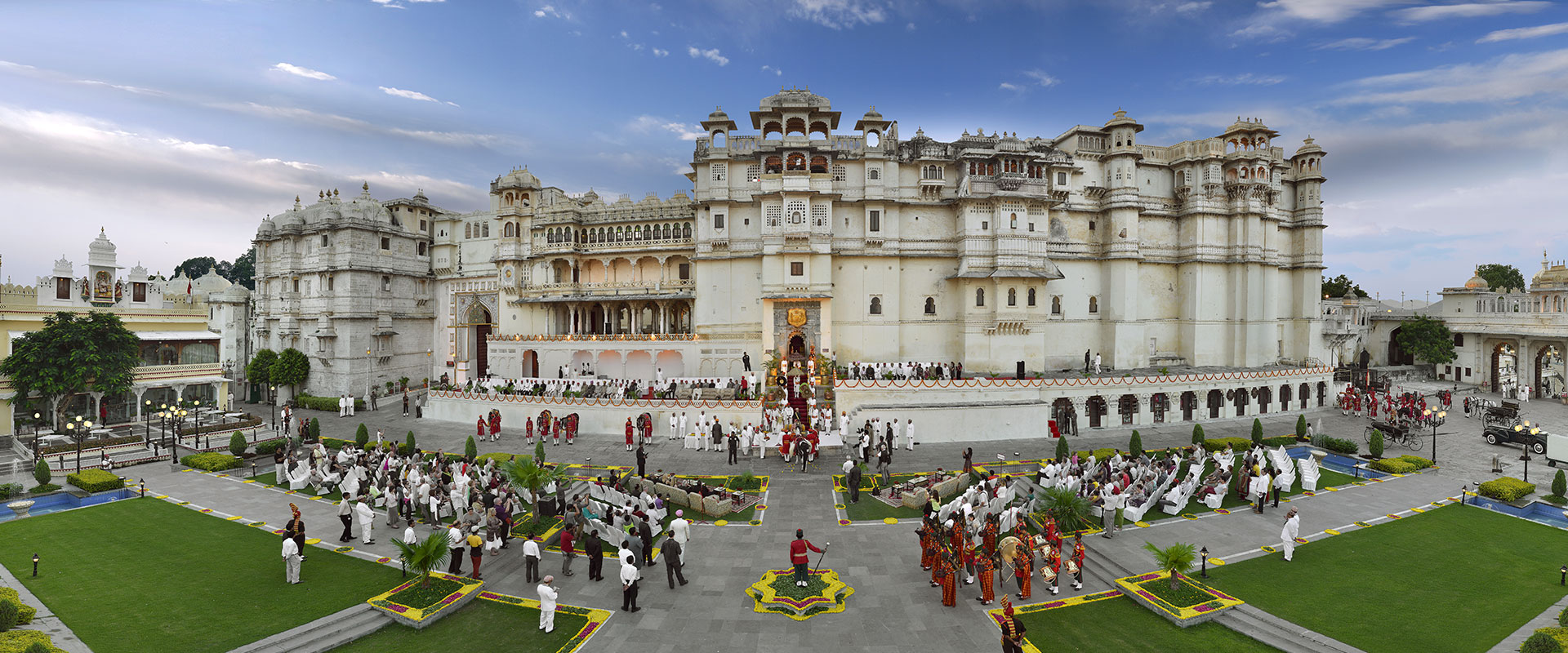Capitals of Mewar
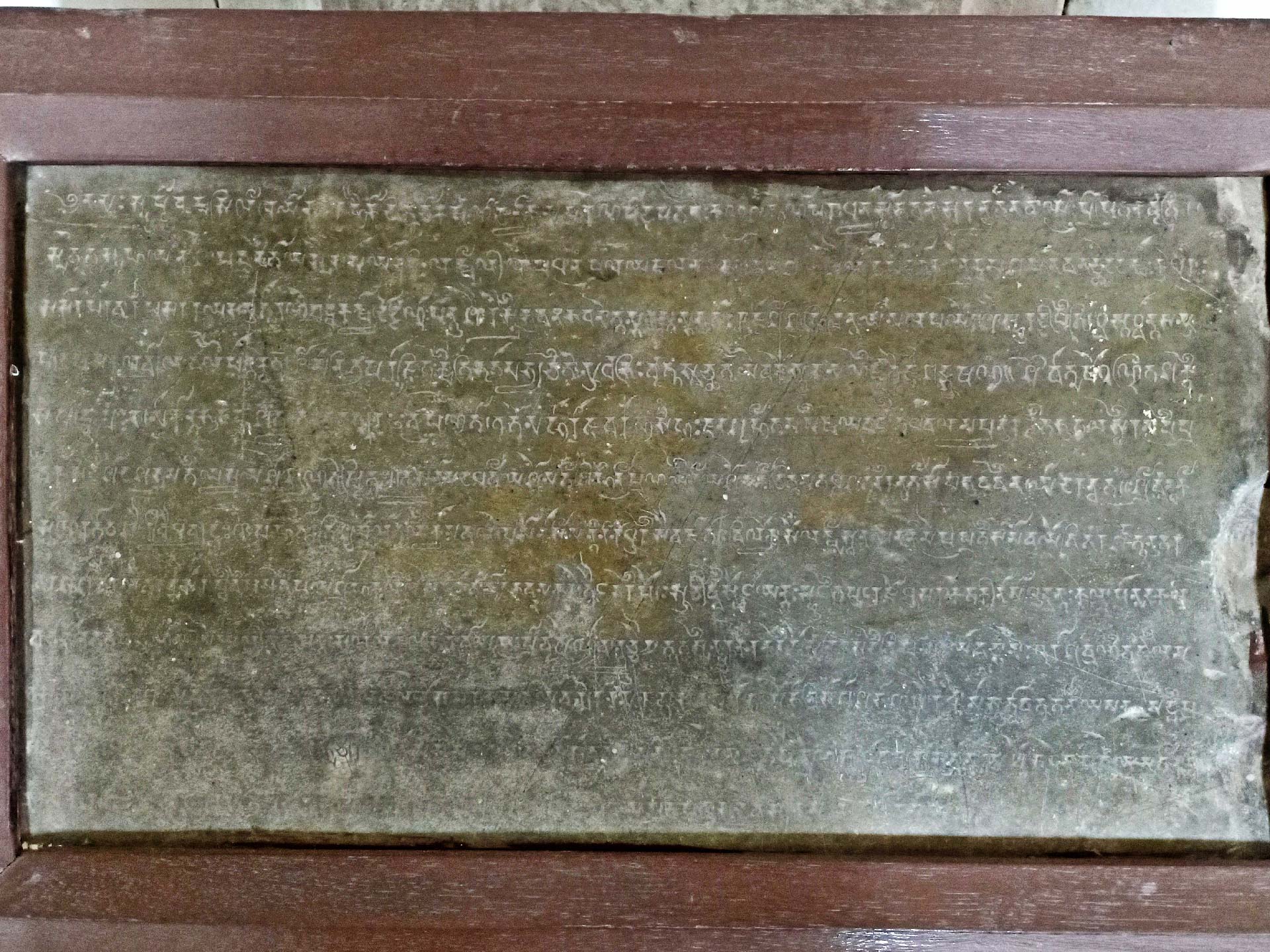

Nagda was an ancient town in the hilly region about 23 kms north of Udaipur and 1 km. from the hill on which stands the famous Shree Eklingnath ji temple. Its old names as found in Sanskrit inscription are Nagahrida and Nagadraha. When Guhil ruler Rawal Nagaditya ascended the throne, he found it necessary to move his capital from the Idar where his father, Mahendra I (r. 606-626 CE) had been assassinated by local Bhils. He made the township of Nagahrida, the dynasty's new capital. Soon, it became a flourishing merchant centre.
After demise of Rawal Nagaditya, his son Siladitya (r. 646 – 661 CE) succeeded the throne, who is described as the conqueror of the foes in Samoli inscription dated Vikram Samvat 703. After him, Rawal Aparajeet (r. 661- 688 CE) became the ruler of Nagda. According to Kunda village stone inscription dated 661 CE, during his reign; his commander-in-chief Varahasimha’s wife Yashomati constructed the Vishnu temple. The next great ruler of Nagda was Bhartri Bhatt II (r. 926 - 951 CE). His son and successor Rawal Allat, transferred his capital from Nagda to Ahar. According to Paldi Inscription dated Vikaram Samvat 1173, Rawal Vijai Singh (r. 1107- 1116 CE) transferred his capital back from Ahar to the former town of Nagda.
Nagda continued to remain the capital of Rawal Mathan Singh (r. 1191-1211 CE). One Stone inscription dated 1182 CE, mentioned the Rawal Mathan Singh was ruling at Nagadraha, 190 Drammas were granted to the Shiva temple. During the reign of Rawal Jaitra Singh (r. 1213 – 1253 CE) Guhils of Mewar gained the high political status. However, according to Chirwa inscription when Sultan Illtutmish attacked Mewar, in the battle of Bhutala, the capital city of Nagda was destroyed by the him, but he was later defeated by Rawal Jaitra Singh. After this incident, he shifted the capital of Mewar to Chittor permanently.
Nagada was political, religious and commercial trade centre. Jainism, Vaishnavism and Shaivism received royal patronage under the Guhils ruler. It was a very important town from the social point of view. The Gotras of this name found among the Kshatriyas, Brahmins and Jains originated from this place.
2. Ahar (Aghatpur)
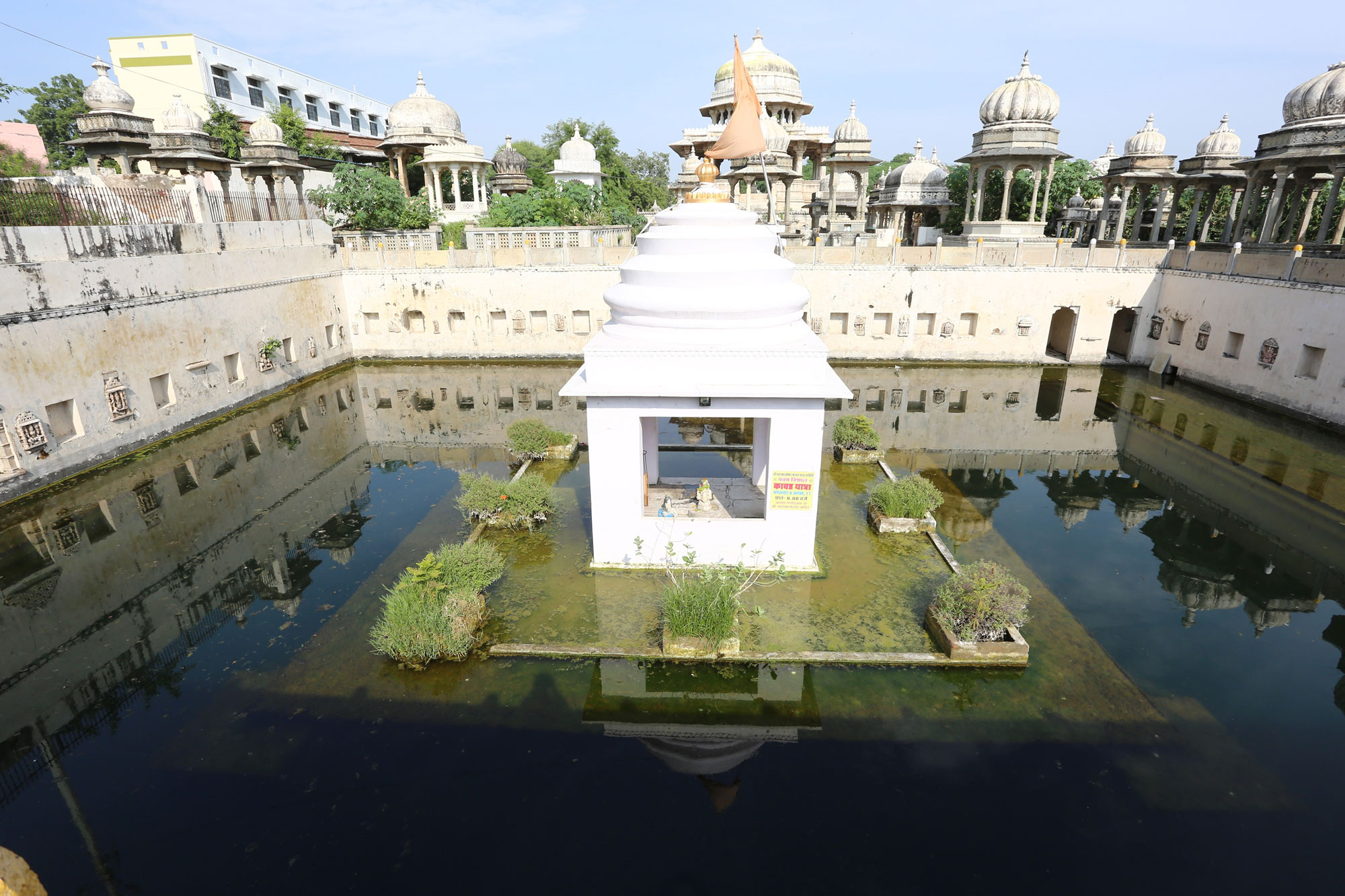
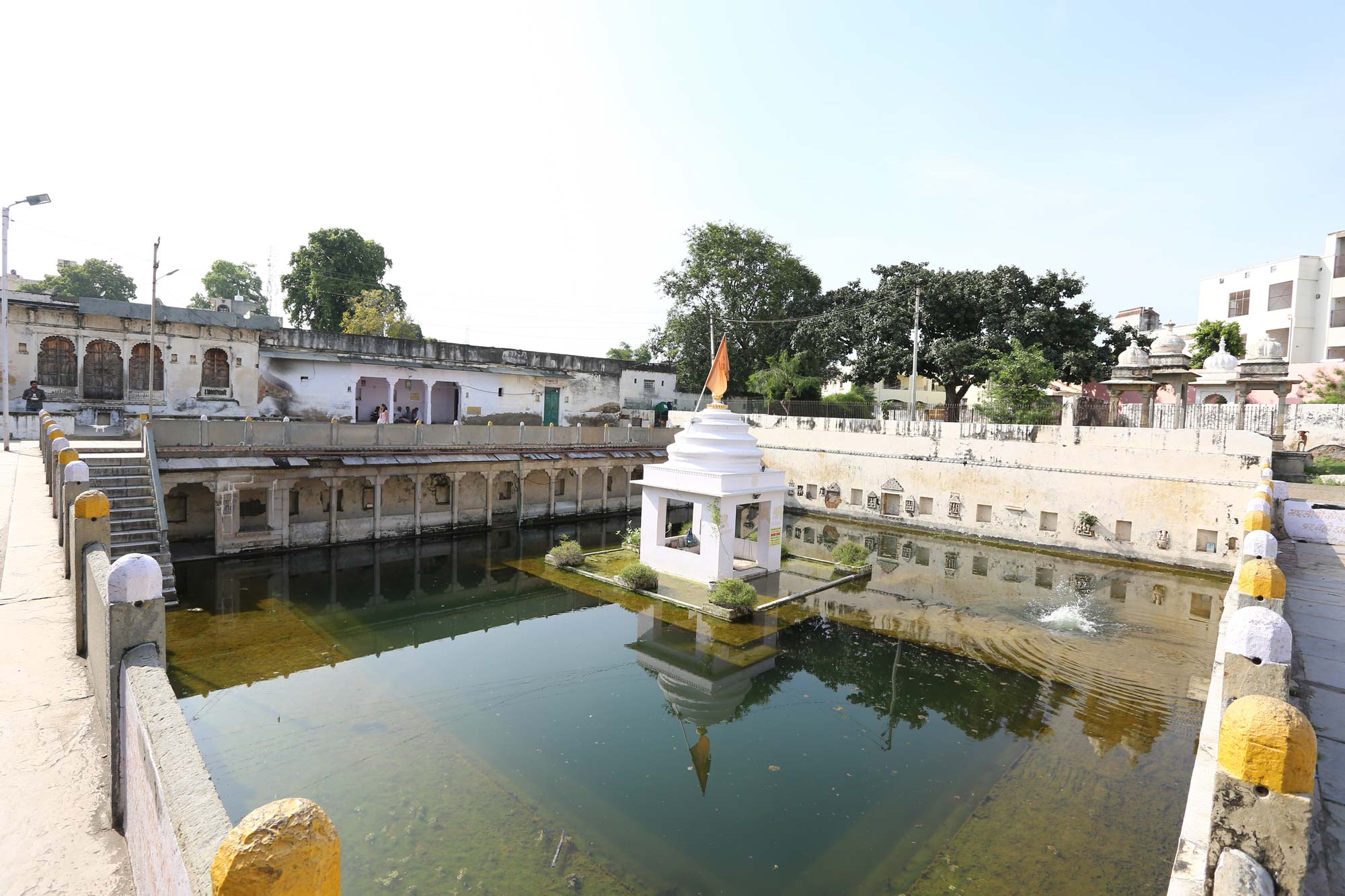
Second political center Ahar is situated in the east of Udaipur. It also known as Aghatpura and Atpura, which is mentioned in Sarneshwar temple inscription dated Vikram Samvat 1010, and Jain manuscripts. In the 10th century CE, Allat (r. 951-971 CE) re-established Ahar and transferred his capital from Nagda to Ahar. During the reign of Bhartri Bhatt II, a person named Adivaraha built the temple of Adivaraha at the holy place known as Gangodhbeda Tirth. According to Sarneshwar inscription, Ahar was not only a political centre but it was an also trade centre. This inscription gives us vital information about the administrative system of Allat’s rule, inland and foreign trade, description of the prevalent coins like Taka and Karshapana. The information about the revenue system is also mentioned in this inscription.
After Allat, his son Narvahan (r. 971-73 CE) sat on the throne of Mewar and continued to rule from Ahar. Narvahan’s grandson Shakti Kumar (r. 977-993 CE) gave new dimensions to Mewar and Ahar prospered vitally during his reign. This can be justified by Ahar inscription of Rawal Shakti Kumar dated Vikram Samvat 1034. It states that Shakti Kumar used to live in Ahar which was very prosperous. The city was an important trade centre. Later, according to Hastikundi inscription dated Vikram Samvat 1034 excavated from Malwa, the Paramar ruler Munja attacked and destroyed Aghatpur. After the attack of Munj Parmar during the reign of Rawal Shaktikumar, the Parmars of Malwa never sought peace with Mewar and continuously meddled in the internal affairs of Mewar. Rawal Vair Singh (r. 1103 – 1107 CE) erected a fresh Rampart having four gates facing all the four cardinal directions round Ahar. Rawal Samant Singh (r. 1172 – 1179 CE), lost Aghatpur. However, His younger brother Kumar Singh, with the help of the ruler of Gujarat, succeeded in expelling Chauhan Kitu Sonagara and became the ruler of Mewar and controlled Aghatpur.
In the 13th century, Ahar was a seat of learning and scholars, poets revived patronage from the state. It was also a trade centre even in the later times. According to Chittorgarh Stone inscription of dated Vikram Samvat 1335, Rawal Samar Singh granted the land for monastery to Pradyumansuri at Aghatpur. It was also a great centre of Brahmanical religion. It was famous by the name of Gangodhbeda Tirth in early times as is mentioned in the Bijoliya Inscription dated Vikram Samvat 1226.
3. Chittor
Chittor was a great political and trade center of Mewar. It is situated to the north-east of Udaipur City. This town appears to have been in existence in the Gupta period. According to Jain scholar Somdev, Huna king conquered Chitrakuta. Afterwards, Chittor became the capital of the Mori rulers. In 734 CE, Bappa Rawal learns his true identity, mounts an attack on Chittor and conquers it from Maan Mori, this information is given in Maan Mori's stone inscription dated 713 CE found at Chittor.
In the 8th and 9th century, Chittor was governed by the Gurjara Pratihara ruler of Kannauj. After the decline the Pratihara power, the Parmar rulers of Malwa defeated the Guhils and occupied Chittor. Later on Chalukya ruler Jaisimha Siddharaja of Gujarat defeated Yashovarman and captured Chittor. In 1151 CE, Vigrahraja IV Chouhan became the ruler of Ajmer; he captured the Chittor from the Chalukyas. After that Chauhan Kitu Sonagara was successful in capturing the stronghold of Chittor. Rawal Kumar Singh, with the help of the ruler of Gujarat, succeeded in expelling Chauhan Kitu Sonagara and became the ruler of Mewar and control Chittor. Later on Rawal Jaitra Singh (r. 1213 -1253 CE) made Chittor his capital for the first time after the destruction of Nagda.
During the reign of Rawal Ratan Singh (r. 1302 - 1303 CE) Sultan Allauddin Khilji had already decided to subjugate the other states. The main motive for the attack on Mewar must have been political; though there might have been strategic and economic reasons too, as Mewar had abundance of silver and zinc deposits (which were used for making the armoury), for the Banas valley provided a good route to Gujarat.
For conducting effective incursions in Central India and the Deccan, his possession over Chittor and Malwa could be very helpful. Chittor got into the hands of the Sultan, which was governed by his son Khizra Khan and was named Khizrabad. According to Nenasi, Allauddin was appointed to Maldev Sonagara (ruler of Merta) as the governor of Chittor. After the death of Maldev, the governorship of Chittor transferred to his son and successor, but he could not retain it for a long time.
Maharana Hameer Singh I consolidated his position and recaptured the Chittor in 1337 CE from Maldev Chauhan decedents. However, the security of Chittorgarh could pose a threat due to its geographical location, as it had always been the centre of ambitions of political powers, being the main centre connecting North India with the western coast and Malwa. Neighboring kingdoms of Gujarat, Malwa and Delhi always tried to capture Chittor. The earlier tradition in Mewar and the concept of the kingdom was that as soon as the capital collapsed, it was believed that the kingdom collapsed with it. In Mewar too, two Jauhars (1303 CE and 1535 CE) had already taken place to protect the capital - Chittorgarh. This struggle went on until 1553 CE, when Maharana Udai Singh II (r. 1537 - 1572 CE) propounded the idea of building a new and safer capital at Udaipur.
In 1567 CE, the Mughal army was trying to enter the fort. Due to a long struggle and end of logistics; the third Jauhar took place in 1568 CE at Chittor with the opening of gates of the fort. The Mewar army under the leadership of Sardar Jaimal and Fatta sacrificed their lives by wearing saffron. In February 1568 CE, the Mughal army captured the fort.
According to Archaeological remains, Brahmanism and Jainism were flourished in Chittor under the patronage of Maharanas. Chittor became a great center of learning in early times. this place is so rich in historical traditions should be a treasure house of fine old monuments. The different ruling dynasties such as Mories, Pratiharas, Chalukyas, Parmaras and Guhils left several monuments of their times.
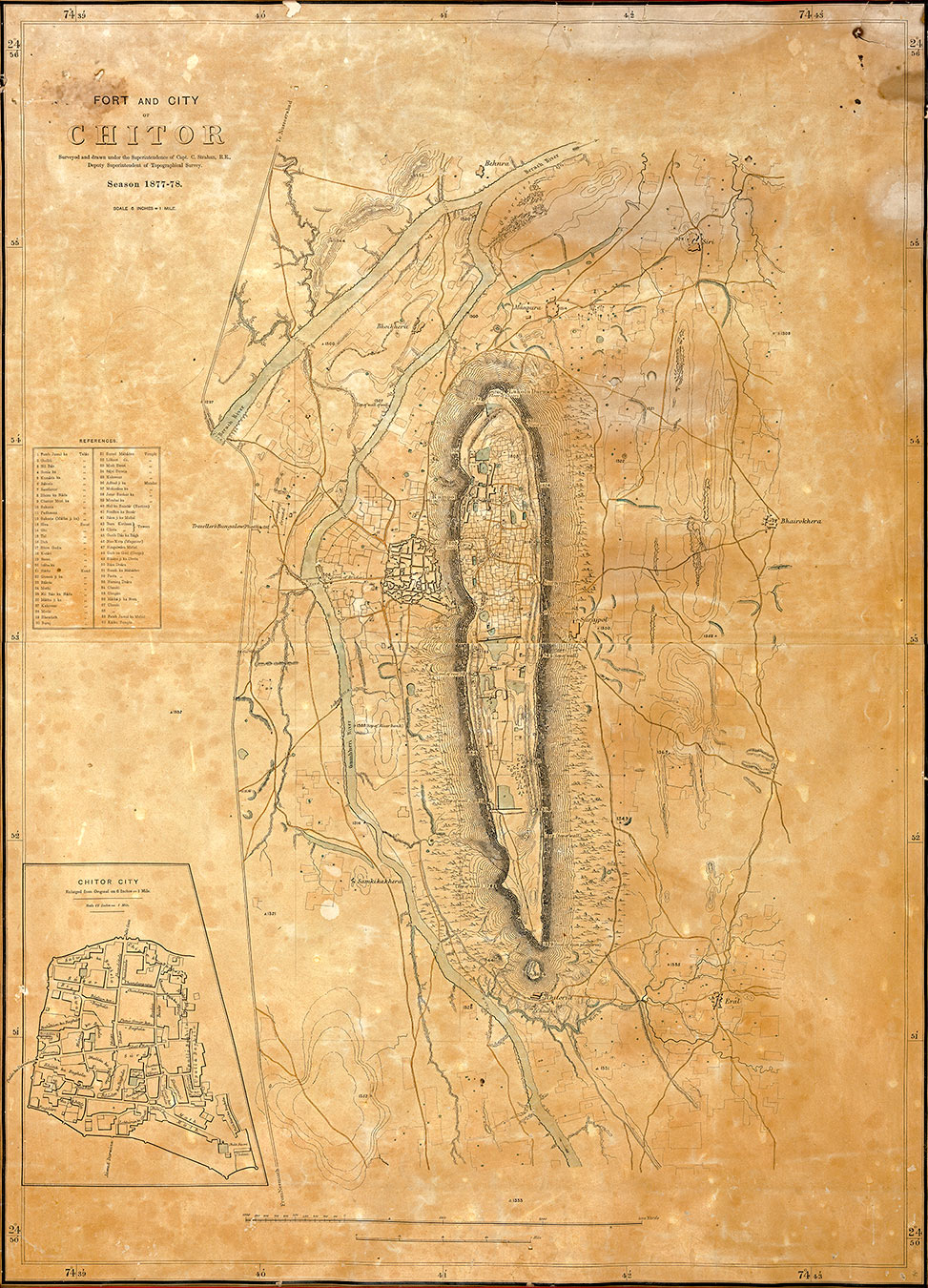
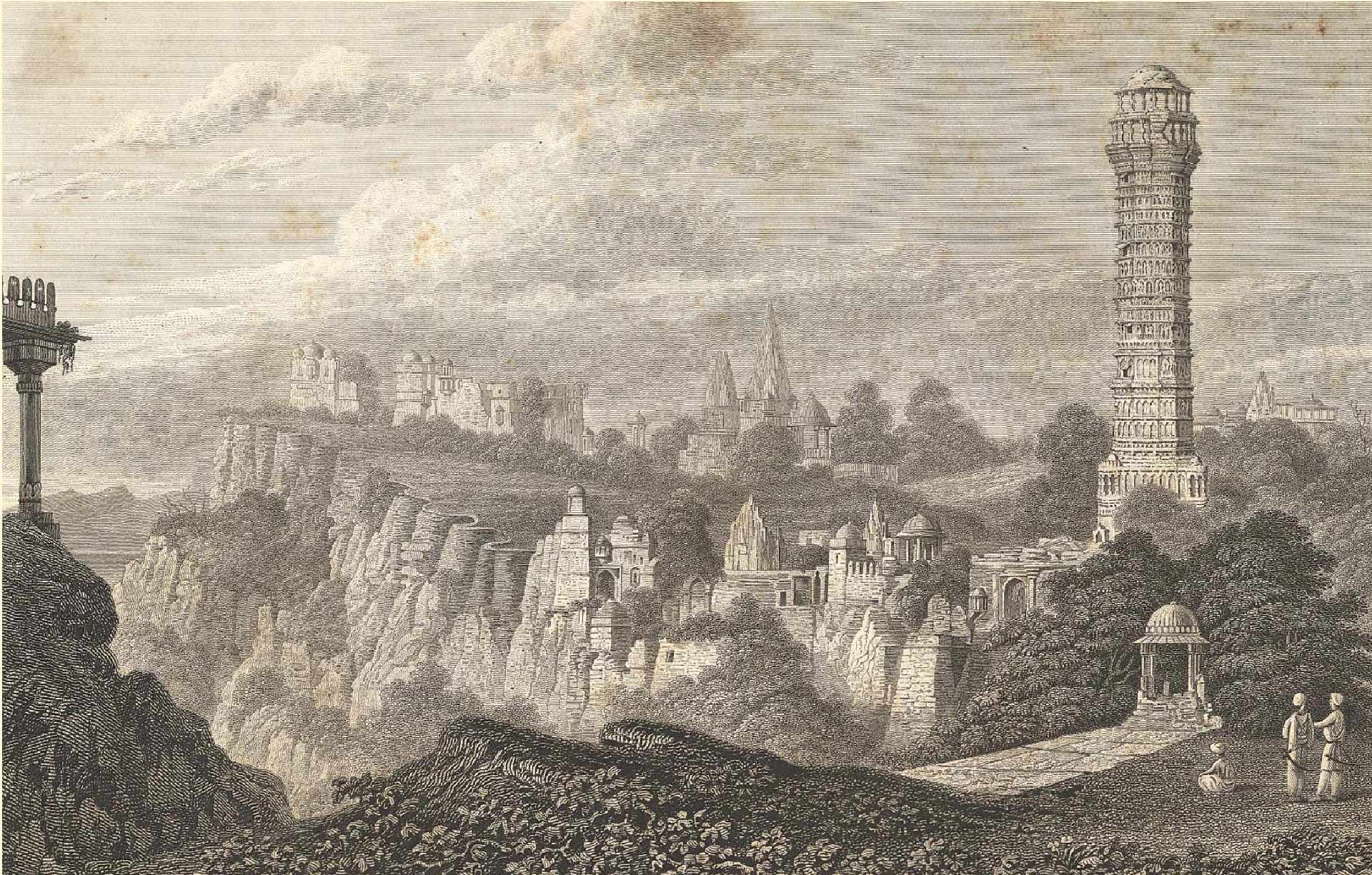
4. Kumbhalgarh
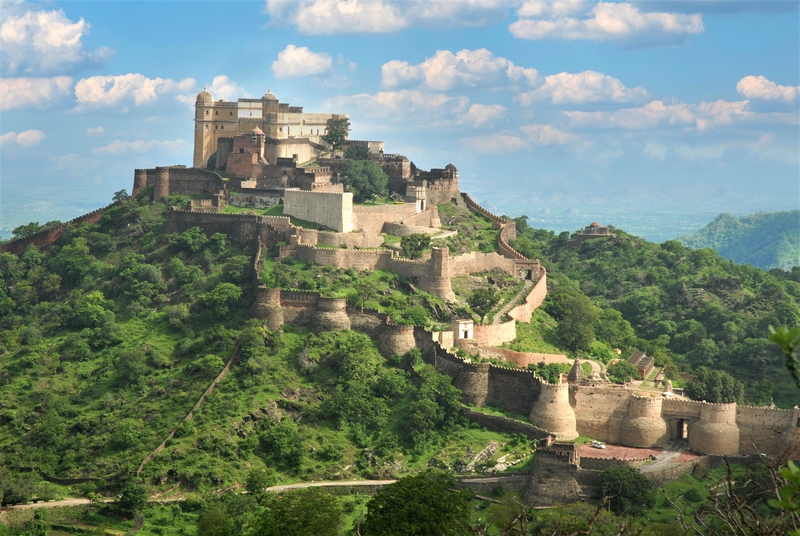
Kumbhalgarh has played an important role as a safer capital in critical periods of the history of Mewar. It is situated 80 km to the north-west of Udaipur city. According to Islamic historian Sahib Haqim, the ancient name of the fort was Machchhindrapur. Mourya ruler Samprati constructed this fortress due to its strategically importance from the security point of view of later Mouryan phase. After Allauddin Khilji’s invasion in 1303 CE, Maharana Hameer Singh I, established the rule of the Sisodia dynasty and till the last this fort remained under the rulers of Mewar. Maharana Kumbha set on the throne of Mewar in 1433 CE. He renamed the fort as Kumbhalmer (Kumbhalgarh) and realized the strategic importance of Kumbhalgarh and started the renovation and expansion of the fort in 1438 CE. Maharana Kumbha constructed the second longest fortification wall of the world (36 kms long) along with Palaces and other religious structures. During the reign of Maharana Kumbha, Sultans of Malwa and Gujarat made attempt to take over this fort. However, they could not succeed. Maharana Kumbha took his last breath at Mamadev Temple, Kumbhalgarh in 1468 CE. He was assassinated by his own son Udai Singh I in the greed of the throne, but he also could not survive for long. After his death the fort remained neglected and Chittorgarh became the main administrative centre of Mewar rulers.
After the demise of Maharana Sangram Singh I (r. 1509-1528 CE) in 1532 and 1535 CE the ruler of Gujarat, Bahadur Shah attacked Chittorgarh. The Mewar heroes laid down their lives in the war, on the other hand, Rajmata Karnavati and other Rajput women sacrificed themselves in the flame of Jauhar to protect their chastity. Rajmata Karnavati, thus at the time of Jauhar, the responsibility of protecting Kanwar Udai Singh (younger son of Maharana Sangram Singh I) was also entrusted to Pannadhai. Taking advantage of this political chaos Banveer (illegitimate son of Kanwar Prithviraj, brother of Maharana Sangram Singh I) killed Maharana Vikramaditya (the elder son of Maharana Sangram Singh I) and acquired the throne of Mewar. Banveer want to kill Kanwar Udai Singh too. However, Pannadhai along with her trusted companions, took Kanwar Udai Singh to a safe place. After leaving Chittorgarh with Pannadhai, Kanwar Udai Singh, reached Kumbhalgarh via Devlia and Dungarpur. With the support of Asha Devpura, the fort in-charge of Kumbhalgarh; later, Maharana Udai Singh II defeated Banveer and recaptured Chittorgarh.
Maharana Udai Singh II took his last breath at Gogunda in 1572 CE. Kanwar Pratap Singh was enthroned to rule Mewar by the Nobles of Mewar at Gogunda. Maharana Pratap organized a Coronation Durbar at Kumbhalgarh. He retained Kumbhalgarh as his second capital. During the Mewar - Mughal struggle Kumbhalgarh fort was a base for Mewar army. When Akbar sent a contingent under the command of Shahbaz Khan to Kumbhalgarh Maharana Pratap strategically escaped from the fort and handed over the charge of the fort to Bhan Songara. Bhan Songara opened the gates for a last fight and the fort temporarily went into the possession of Mughals.
After, the battle of Dewair Maharana Pratap and his army returned to Kumbhalgarh and recaptured it from the Mughals. After the demise of Maharana Pratap, Kanwar Amar Singh elder son of Maharana Pratap succeeded the throne of Mewar. Maharana Amar Singh shifted his capital Chawand to Udaipur because by this time Udaipur founded by Maharana Udai Singh II had become populous, but Kumbhalgarh continued to be under the possession of Mewar. Maharanas of Mewar visited Kumbhalgarh intermittently to pass their time.
Maharana Fateh Singh was aware of the importance of architecture of the fort. He renovated the fort and constructed the Fateh Prakash Palace at Kumbhalgarh. According to Archaeological remains, Jainism and Shaivism flourished in Kumbhalgarh under the patronage of Maharanas. The Yagya Vedi, Neel Kanth Mahadev temple, Parshva Nath temple, Bawan Devri Jain temple, Golera Jain temple, Mamadev temple, Pital Shah Jain temple were situated there. This place is so rich in historical traditions that it should be a treasure house of fine old monuments.
5. Udaipur

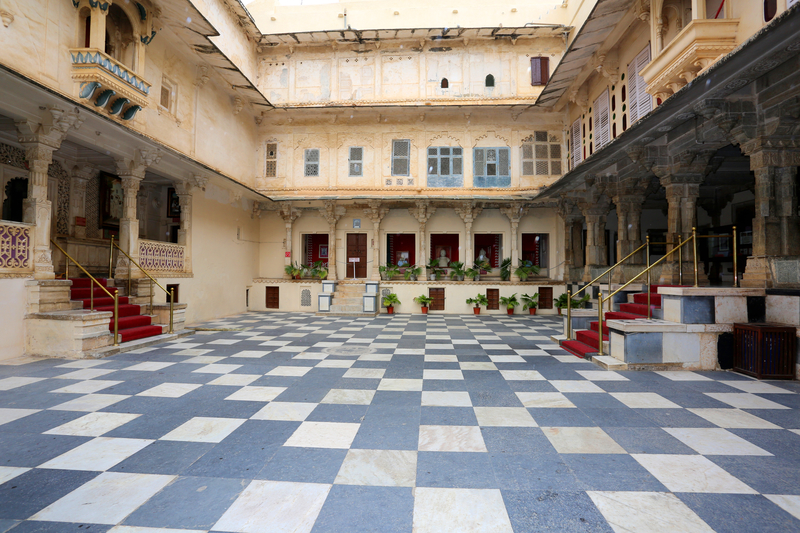
Maharana Udai Singh II (r. 1537-1572 CE), 53rd Custodian of the House of Mewar, propounded the idea of building a new and safer capital. The earlier tradition in Mewar and the concept of the Medieval kingdoms was that as soon as the capital collapsed, it was believed that the kingdom collapsed with it. In Mewar too, two Jauhars had already taken place to protect the capital - Chittorgarh, one during the childhood of the Maharana himself. The vulnerability of Chittorgarh could pose a severe threat to the kingdom due to its geographical location, as it had always been the centre of ambitions of political powers, being the main centre connecting North India with the western coast and Malwa. Situated on a hill, it was easy to besiege from all sides and when logistics and supplies were low, opening the gates of the fort was inevitable and it was a question of Do or Die. It was difficult to defend the fort of Chittor.
Maharana Udai Singh tried to secure the mountainous region and encouraged the people of Mewar to settle in Girwa valley. For the new capital, the Maharana chose a mountainous region covered by ranges of Aravalli hills in the west and south-west of Mewar, which was well protected by nature. According to the book titled 'Chittor-Udaipur ka Patnama' edited by Dr. Manohar Singh Ranawat and 'Rajratnakar' written by Sadashiv Nagar, in 1553 CE, on the day of Akshaya Tritiya, Vikram Samvat 1609, Udaipur was established in the midst of the hills of Girwa and near ancient town Ahar. Ahar was a prosperous town and it also remained a capital of the rulers of the Mewar for a considerable time.
In 1559 CE, Maharana visited Shree Eklingnath ji Temple to commemorate the birth of his grandson, and while returning went for a hunt, during which the Maharana met Goswami Premgiri ji Maharaj on the banks of Lake Pichola. According to the directions given by the hermit, in 1559 CE, Maharana started the construction of the Palace in the capital under the direction of a Sutradhar named Raja Bhardwaj, grandson of Mandan Bhardawaj, of the famed Fort Kumbhalgarh.
The architecture of Maharana Udai Singh's reign reveals a defensive approach rather than an artistic side. The construction was done keeping the future wars in sight. The establishment and development of Udaipur city was an important initiative of Maharana. Maharana built gates at the entrance of the city for defence like Debari Darwaza. The construction also comprises of Udai Sagar, Badi Pal, Moti Magri's palace and stepwells which are strong evidences of his architectural approach. In the palace of Udaipur, Navchoki, Panera, Rai Angan, Nika ki Chopad, Pandeyji ki Ori, Sej ki Ori, Zenana Rawala (currently Kothar) were built by Maharana Udai Singh. Apart from this, the construction of Udai Shyam temple on the bank of Lake Udai Sagar also took place during the reign of the Maharana. Apart from Maharana, his family was also involved in the development of this area. In 1554 CE, Maharani Sonagari built Badla Wali Sarai and Panghat Baori. Maharani Sahajkunwar Solankini got the Sarai, the stepwell and the Shiva temple built. Maharani Dheer Kunwar built a stepwell, a temple and an inn outside the village of Debari. The efficient planning and vision of Maharana populated the Girwa region.
Maharana desired to develop a beautiful and safe city by building his new Palace on the shore of Lake Pichola. With practicality and farsightedness, he settled several working communities like Jadiya (Gold Smith), Kasara (Brass Workers), Sikligar (Sword Smith), Prajapats (Potters), Mochi (Shoe makers), Suthar (Carpenters), Bunkar (Weavers), Vari (who make utensils from tree-leaves), Ganchi (Bamboo workers), Tamboli (Betel sellers), Chitrakars (Painters), Rangrez-Chhipa (Cloth dyers), Teli (Oil marketers) at Udaipur and granted them lands. They all lived near the Palace in their own locality and have played an important role in development of Udaipur. Presently the handicraft material produced by these communities is the symbol, as living heritage, of vibrant Mewar.
After the reign of Maharana Udai Singh II, Udaipur as the capital of Mewar has been growing under the patronage of various Maharanas.
6. Gogunda
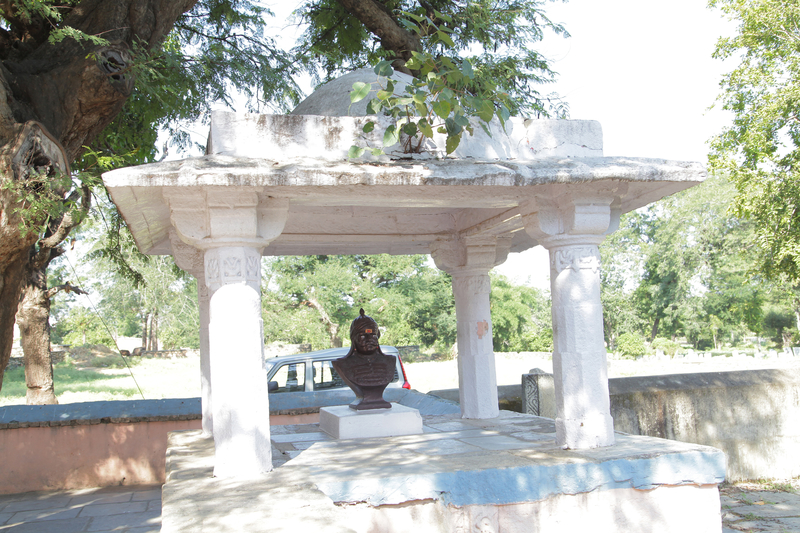

Gogunda was a strategic centre and a temporary capital of Mewar. In 1553 CE, Maharana Udai Singh II established his new capital at Udaipur while he made Gogunda his temporary capital. It is situated 39 kms north-west of Udaipur. On Falgun Shukla Poornima, Vikram Samvat 1628 Maharana Udai Singh II died, because of ill health, at Gogunda. The new capital Udaipur was not fully developed yet but as Gogunda was the residential capital of Mewar, so the Maharana was cremated at Gogunda. His elder son Kanwar Pratap Singh was subsequently coronated at Mahadev Bavdi, Gogunda.
Later, Maharana Pratap adopted Kumbhalgarh as his new seat of government, but Gogunda remained the base camp of his guerrilla warfare against the Mughals. In 1576 CE, Mughal commander Man Singh of Amber captured Gogunda and made his temporary headquarter there. In September 1576 when Man Singh and Asaf Khan returned to Ajmer, the Maharana recaptured Gogunda and Mohi. After that, Akbar himself came to the Mewar and before for leaving Ajmer, he sent his army under the command of Bhagwant Das and Man Singh towards Gogunda. For the preparation of further struggle Maharana went away into the hilly areas of Kumbhalgarh. The outposts of Gogunda and Mohi were recaptured by the Mughal army. After the departure of the Mughal army, Maharana again recaptured Gogunda and Mohi. Gogunda became the battle ground in the Mewar - Mughal struggle till 1585 CE.
After the demise of Maharana Pratap, Akbar got another chance to fulfil his ambition. In 1600 CE, he sent Mughal army under the command of Prince Salim (later Jahangir). In 1605, Prince Salim sat on the throne and strictly followed the policy of his father. He sent a large force under the command of his son Prince Parvez. Maharana Amar Singh I, son of Maharana Pratap made necessary preparations to meet the Mughal army and closed all important passes of the hills. Mughal army was badly defeated by the Mewar army near Dewair pass.
In 1609 CE, Abdullah Khan was made in-charge of the Mewar campaign. He succeeded in stabilising his outposts at Gogunda and Unthala. In 1611 CE, Maharana and the Mughal army had a fierce fight at Ranakpur. Several Important chiefs of Mewar laid down their lives but the Mewar army emerged victorious. In 1613 CE, Prince Khurram (later Shahjahan) was sent to attack Mewar. After a long struggle, In 1615 CE, Maharana Amar Singh I met with Prince Khurram and negotiated a peace treaty at Gogunda.
Gogunda belongs to the Jhala Rajputs. Shatrusal of Gogunda, son of Man Singh of Delwara had a dispute with Maharana Pratap and he went to Jodhpur. After that, Maharana transferred the Jagir to Kanwar Manmandas Rathore from Badnore. During the reign of Maharana Amar Singh I, in 1611, Abdullah Khan captured Gogunda when Shatrusal returned to fight for his motherland and sacrificed his life. Pleased with his loyalty Maharana returned his Jagir of Gogunda to Shatrusal’s younger son Kanha Singh.
According to literary sources and archaeological remains, Maharana chose Gogunda as a temporary capital because it was a mountainous region covered by ranges of hills, which was well protected by nature. Later on, it became the important battle zone and base camp for Mewar-Mughal struggle. The Palace of Gogunda, Mahadev Baori (Maharana Pratap’s coronation place), temples and Mahasatyaji (Maharana Udai Singh’s cremation place) are situated there.
7. Chawand
Chawand was the last capital town situated in the mountainous region covered by the ranges of Aravali hills and dense forest about 60 kms southeast of Udaipur. In 1585 CE, Maharana Pratap I (r. 1572-1597 CE) captured Chappan area from the Loona Chawandia Rathore and established his capital at Chawand.
Initially, the reign of Maharana Pratap was occupied with struggle against the Mughals. In 1585 CE, Mughal attacks were considerably reduced and Maharana focused on the development of Mewar. According to the report of Archaeological Survey of India, remains of the Fort of Chawand, along with Shree Chamunda Mata temple and houses for the nobles are located here. However, according to the new research, this fort and the temple were initially constructed under the patronage of Loona Rathores. Later on Maharana Pratap restructured/ renovated the fort and the temple. Chawand was a seat of learning and scholars, painters received patronage from the Maharana. Under the patronage of Maharana; Chakrapani Mishra wrote 'Vishavavallabh’, ‘Muhurtmala’ and compiled and edited 'Rajyabhishek Padati', 'Gora-Badal Charitra' composed by Jain scholar Hemrantan Suri and Sanskrit literature was composed by various scholars. Maharana Amar Singh I (r. 1597 - 1620 CE) continued the legacy of his father and Chawand was developed as an educational and cultural centre of Mewar. A new style of painting developed in Mewar, which is known as Chawand painting style. Nisaradi, (Nasruddin), was the great painter, who illustrated the famous Ragamala miniature painting series in 1605 CE during his patronage. After the Mughal struggle, Chawand played a vital role in the development of Mewar. It was situated on the main trade route of Gujarat. Soon, it became a centre of merchant activities. In 1597 CE, Maharana Pratap took his last breath. His cremation took place on the bank of a river near village Badoli situated about 2 kms from Chawand, where now stands a cenotaph in his remembrance. Maharana Amar Singh I constructed the cenotaph and later on Maharana Bhupal Singh (r. 1930-1955 CE) renovated the cenotaph in 1937 CE.
After the Mewar-Mughal peace treaty in 1615 CE, Maharana Amar Singh I transferred his capital from Chawand to Udaipur. According to the Archaeological remains, Chawand is a symbol of Maharana Pratap's creativity and farsightedness.
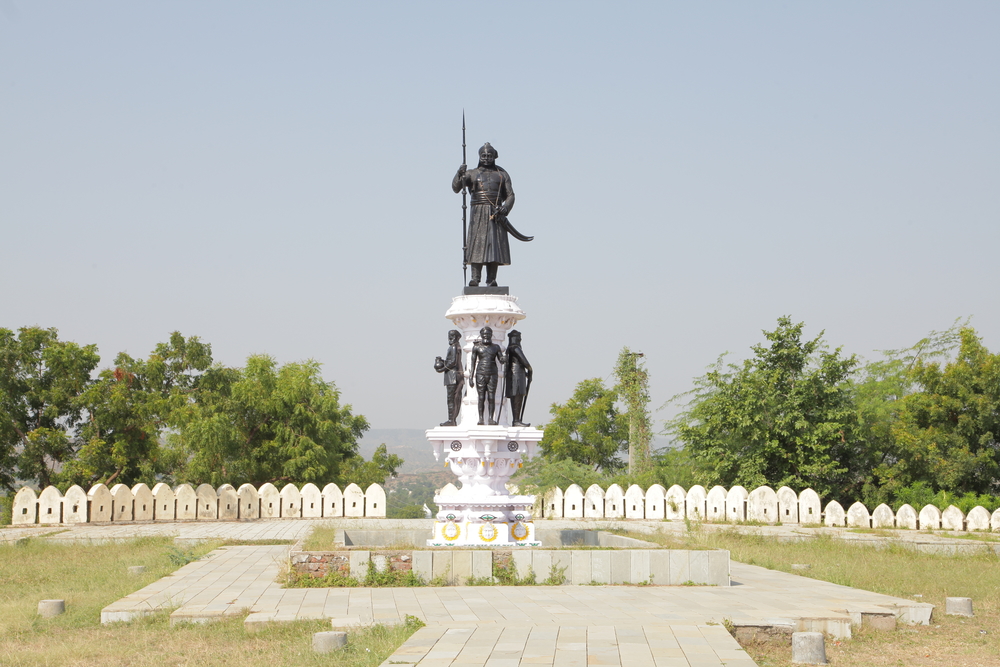
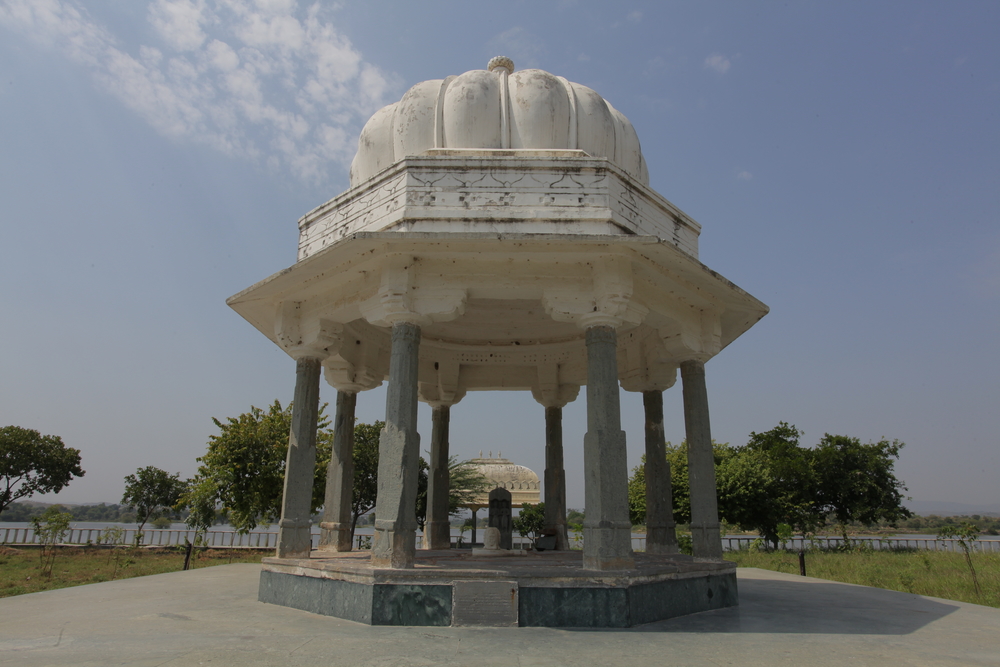
Subscribe to Newsletter
Eternal Mewar Udaipur India
© 2025 Eternal Mewar, All Rights reserved
Powered by Nexithon
Copyright © 2025, Shriji Dr. Lakshyaraj Singh Mewar of Udaipur - Concept Developer, Eternal Mewar, All Rights Reserved


